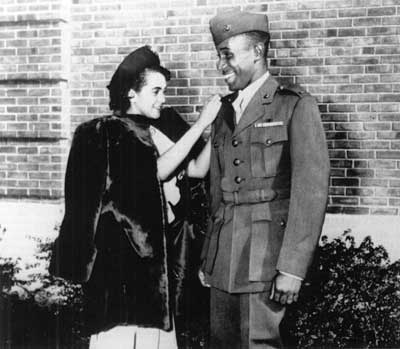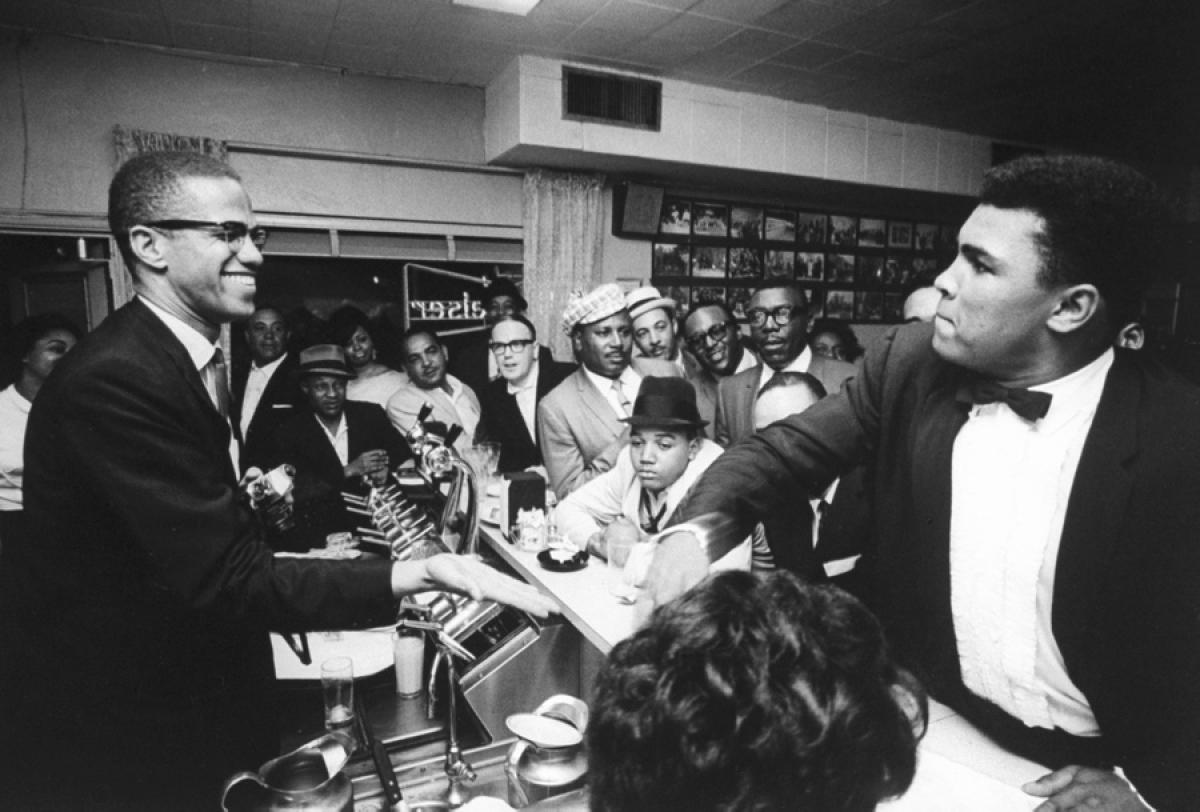CALIFORNIA
Frederick C. Branch, 82; First Black Officer in U.S. Marine Corps
April 12, 2005|Myrna Oliver | Times Staff WriteFrederick C. Branch, the first African American commissioned officer of the U.S. Marine Corps, has died. He was 82.
Branch died Sunday in Philadelphia after a short illness, his family said.
One of 20,000 black Marines to serve in World War II, Branch earned his second lieutenant's bars Nov. 10, 1945. The landmark promotion did not come easily.
"For a person of color to aspire to be an officer in the Marine Corps was a danger," Cornell A. Wilson Jr., a Marine Corps general, said last year when Branch was honored at the 95th annual convention of the NAACP in Philadelphia. "We still had Jim Crow laws. We still had unwritten rules and regulations in this country.... He could very well have been lynched or injured in some way."
Born May 31, 1922, in Hamlet, N.C., the fourth of seven sons of a minister, Branch studied at Johnson C. Smith University and had transferred to Temple University in Philadelphia when he was drafted in May of 1943.
The Marine Corps had barred blacks until President Franklin D. Roosevelt forced the opening of ranks with a 1941 executive order. Nevertheless, boot camp remained segregated until 1949. Branch and other black wartime Marines were trained at Montford Point, five miles from the white recruits' training fields at Camp Lejeune, N.C. They became known as the Montford Point Marines.
Branch's first application for Officers Candidate School was rebuffed. "They told me to shut that blankety-blank stuff up about being an officer," he said in a 1995 interview. "You ain't going to be no officer."
Serving in the South Pacific, however, Branch impressed his commanding officer enough to earn his recommendation. In 1944, Branch got his opportunity for officer's training -- with the Navy's V-12 program at Purdue University in West Lafayette, Ind. The only black in a class of 250 future officers, Branch made the dean's list.
With the war ended by the time he was commissioned, Branch went into the Reserves. He completed a degree in physics at Temple and established a science department at Philadelphia's Dobbins High School, where he taught until his retirement in 1988.
Reactivated during the Korean War, he was sent to Camp Pendleton in San Diego County.
The Marine Corps had envisioned black officers for black troops. "As it turned out," Branch told CNN in 1997, "my first command had one Negro and 79 whites."
Discharged in 1952, Branch returned to the Reserves, where he was promoted to captain. But he became disillusioned by continuing covert discrimination and promises of advanced training that never materialized, he told the Raleigh News & Observer in 1999. He resigned in 1955.
The Marine Corps, which in later years came to honor Branch as a pioneer in integration, in 1997 named a training building for him at Marine Officers Candidate School at Quantico, Va. He will be buried at the Quantico base with full military honors.
Widowed in 2000 upon the death of his wife of 55 years, Camilla "Peggy" Robinson, Branch is survived by two brothers, William of New Rochelle, N.Y., and Floyd of Washington, D.C.; and a godson, Joseph Alex Cooper.






















